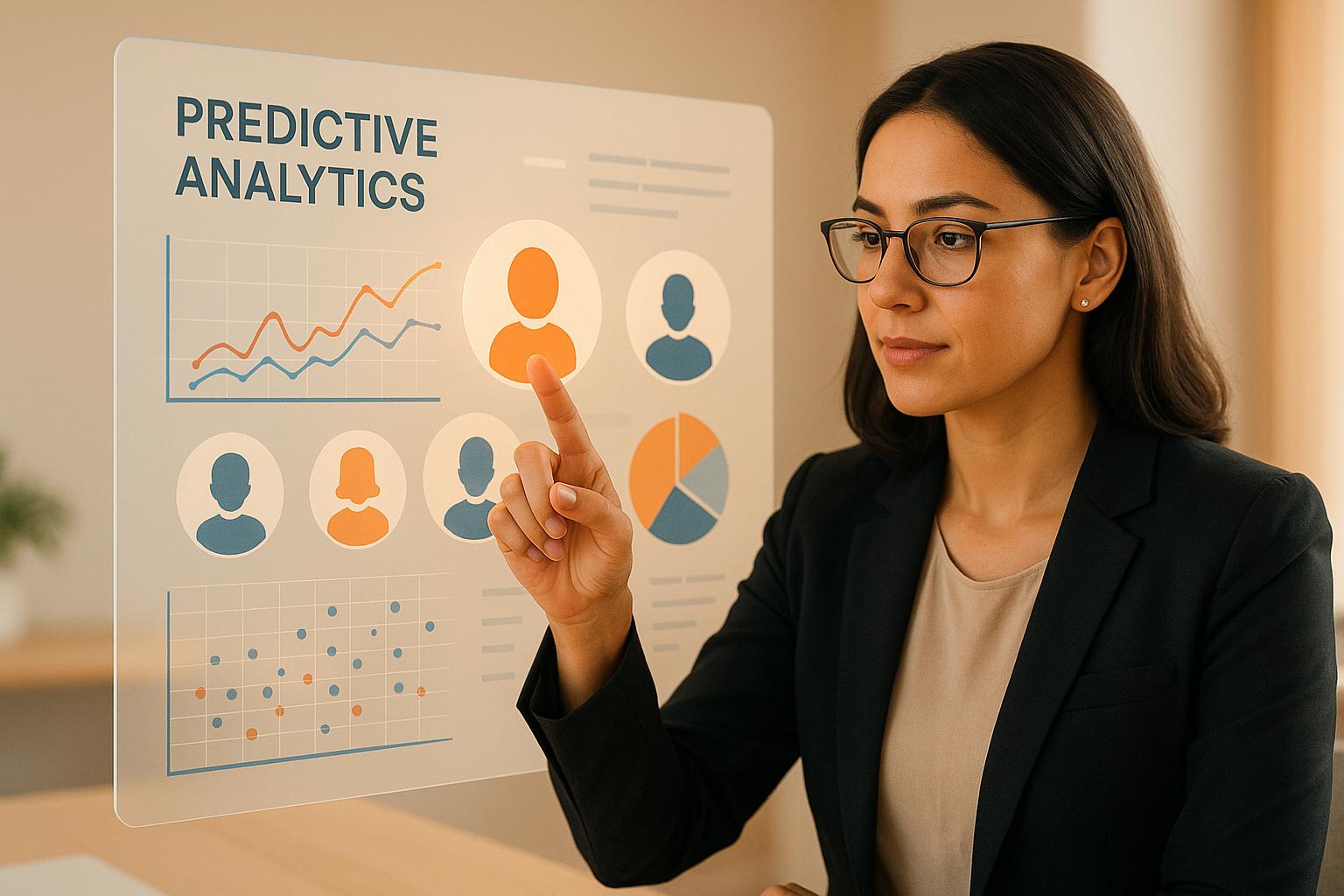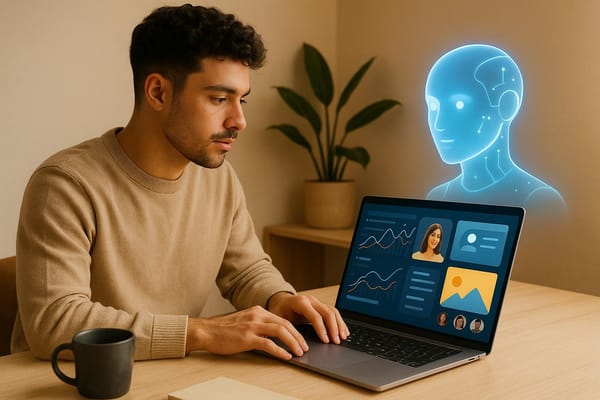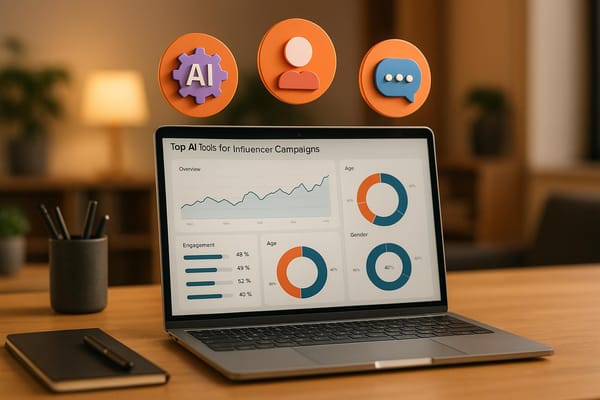How to Handle Content Licensing in Co-Creation
Learn how to navigate content licensing in co-creation projects, ensuring clear ownership and legal compliance among contributors, including AI.
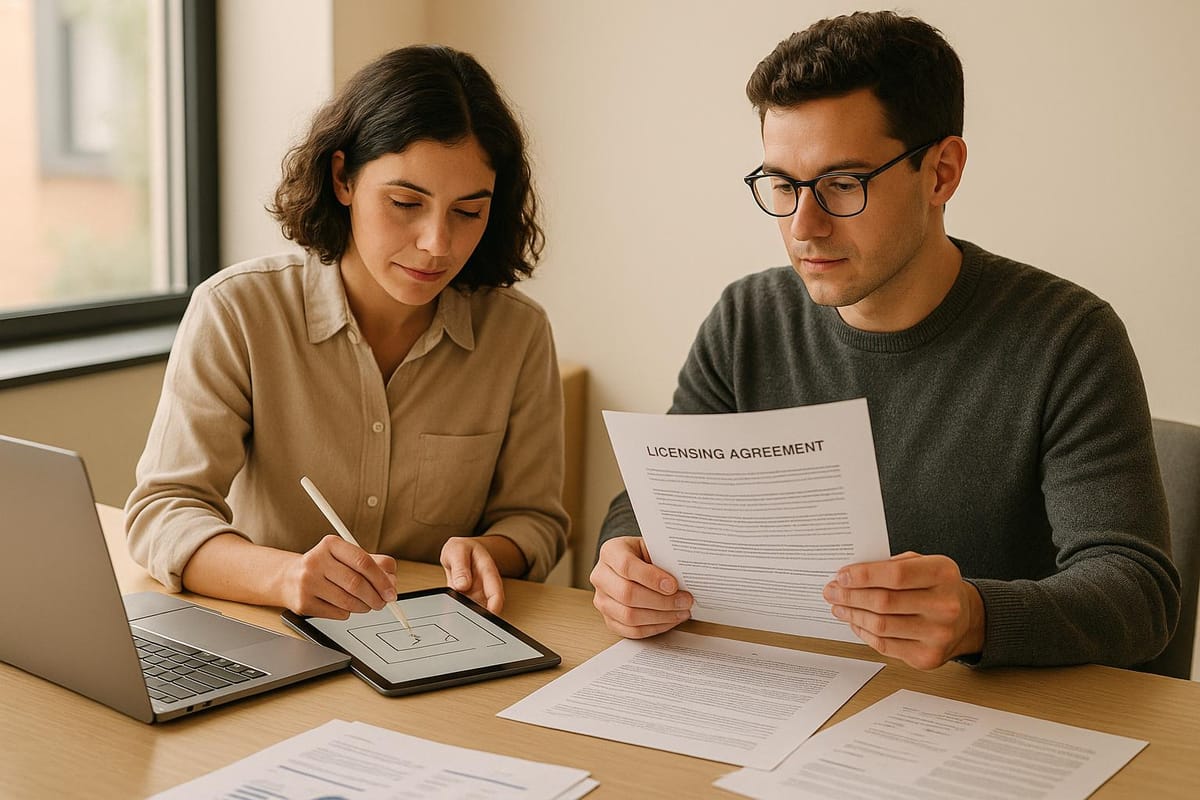
Content licensing in co-creation ensures clear ownership, usage rights, and legal compliance when multiple contributors, including AI, are involved. Without proper licensing, disputes over intellectual property can arise, leading to financial and legal risks.
Here’s what you need to know:
- Why Licensing Matters: Licensing defines ownership, usage terms, and protects contributors' rights. It’s especially important in AI collaborations, as copyright laws often don’t recognize AI-generated content without human input.
- Legal Basics: Joint ownership applies unless specified otherwise. Contributors must agree on exclusive rights and profit sharing. For AI content, human involvement must be documented for copyright eligibility.
- Key Steps for Licensing Agreements:
- Define project scope, roles, and ownership shares upfront.
- Choose a licensing framework (e.g., Creative Commons, custom agreements).
- Specify rights, payment terms, and dispute resolution in the contract.
- Include clauses for confidentiality and updates as projects evolve.
- AI and Multi-Party Challenges: AI-human hybrid content requires clear attribution and documentation. Multi-party collaborations need agreements on revenue sharing and roles.
- Tools to Simplify Licensing: Platforms like Media AI streamline licensing by connecting you with collaborators, managing agreements, and ensuring compliance.
Proper licensing protects intellectual property, fosters trust, and avoids costly disputes. Whether you’re working with creators, journalists, or AI tools, clear agreements are the foundation of successful co-creation.
How to license your content (License Agreement Template)
Legal Requirements for Co-Created Content
Navigating the legal landscape of co-created content can be tricky, especially with the added complexity of AI tools. Current copyright laws often struggle to address the nuances that arise when humans and machines collaborate.
Intellectual Property Rights Basics
When multiple people contribute to a project, joint ownership is typically the default unless a written agreement states otherwise. This means every contributor automatically owns an equal share of the work, regardless of how much they actually contributed.
Under U.S. Copyright law, Section 101 defines a joint work as "a work prepared by two or more authors with the intention that their contributions be merged into inseparable or interdependent parts of a unitary whole". For this to apply, two conditions must be met: each contributor must make a copyrightable contribution, and all must intend for their work to become a unified piece.
Joint ownership comes with some interesting challenges. Any co-author can grant non-exclusive rights to third parties without asking the others for permission. However, selling the work outright or granting exclusive rights requires unanimous agreement among the creators. This setup means that one co-author could license the content in ways the others didn’t expect. Additionally, each co-author is required to share any profits earned from the work with the others.
What’s more, every joint author owns an equal share of the work, regardless of whether one person contributed significantly more than the others. To avoid misunderstandings, experts strongly recommend drafting written agreements before starting any collaborative project. As one legal expert explains, "IP ownership can depend on employment status, contracts, or collaborative agreements".
This brings us to the added layer of complexity introduced by AI-generated content.
Licensing for AI-Generated Content
AI-generated content doesn’t fit neatly into traditional copyright frameworks. Unlike human-created works, these outputs demand clear disclosure of human involvement to qualify for copyright protection.
The U.S. Copyright Office has made its position clear: "If a work's traditional elements of authorship were produced by a machine, the work lacks human authorship and the Office will not register it." However, AI involvement doesn’t automatically disqualify a work from copyright protection. The key is whether the AI serves as a tool for human creativity or replaces it entirely. For instance, if a person uses AI to assist in expressing their own ideas, the resulting work might still qualify for protection. Similarly, creative editing or arrangement of AI-generated outputs can also make the final product eligible.
When it comes to licensing agreements involving AI content, transparency is critical. Attorney Aaron Hall emphasizes that "licensing agreements must explicitly disclose AI involvement, detailing the specific technologies and human interventions used in content creation". The situation becomes even more complex in international collaborations, as different countries handle AI-generated content differently. For example, the U.S. and EU generally don’t recognize AI as an author, but the UK and China attribute copyright to the human user of the AI. These differences highlight why "it is difficult for rights holders and brands to rely on current contracts".
Modern licensing agreements also need to address transparency around attribution and usage. Hall notes that "clear attribution terms are required to define ownership and usage rights of AI-generated content, addressing legal ambiguities". Additionally, licensees must be upfront about using AI-generated content to maintain authenticity and avoid legal issues. AI-related projects often involve multiple stakeholders - such as data providers, algorithm developers, and end users - creating a tangled web of potential rights holders that licensing agreements must carefully navigate.
These complexities set the stage for understanding how U.S. copyright law applies to co-creation projects.
US Copyright Law Compliance
To comply with U.S. copyright laws, it’s important to grasp both traditional principles and the challenges posed by AI. The basics are straightforward: copyright protects original works of human creativity that are fixed in a tangible form. To qualify, a work must be independently created by a human and show at least a minimal level of creativity.
The "work made for hire" doctrine also plays a role in co-creation. If an employee creates content as part of their job, the employer automatically owns the copyright. This can complicate collaborations involving independent contractors or employees from different organizations.
For AI-assisted content, the Copyright Office depends on creators to honestly disclose the role of AI. Applicants must clarify whether the content was simply assisted by AI, where humans controlled the creativity, or fully generated by AI. For example, if someone uses a simple prompt to generate AI artwork, that work likely won’t qualify for copyright protection. However, human editing or arranging of AI outputs might make the final product eligible.
Fair use is another critical consideration, especially in the context of training AI models and generating content. Training AI often involves text data mining, which could infringe on the copyright holder’s reproduction rights. The "transformative use" standard is central to fair use decisions, but courts have yet to establish clear guidelines for AI applications.
To stay compliant, organizations should adopt strong documentation practices. This might include using digital watermarking, content hashing, or metadata tagging to track the use of copyrighted materials. Some companies are even turning to blockchain-based systems to create tamper-proof records of training data and attribution. As regulations around AI continue to evolve, experts advise that "organizations should maintain clear internal policies and consistently document AI's involvement in their workflows to mitigate risks".
How to Create Content Licensing Agreements
Crafting a solid licensing agreement transforms legal compliance into clear, actionable terms. It sets the groundwork for smooth collaboration by defining roles and expectations upfront, reducing the risk of disputes later.
Step 1: Define Project Scope and Roles
Before diving into legal jargon, start by clearly defining the scope of your project and assigning roles. This groundwork helps avoid confusion and keeps everyone on the same page.
Organize workshops with key stakeholders to outline the project’s scope. These sessions ensure early alignment and minimize unexpected changes later. Use the SMART criteria (Specific, Measurable, Achievable, Relevant, Time-bound) to keep the scope clear and achievable.
Document everything - background, scope, stakeholders, constraints, dependencies, acceptance criteria, and risks. This document acts as a blueprint, detailing the project’s boundaries, goals, and deliverables.
"Clearly defining the scope of a project helps prevent misunderstandings, minimize risks, and control scope creep, which can lead to project failure." - Wellingtone
When assigning roles, be specific about each contributor’s responsibilities. Clearly document ownership shares to outline rights and obligations. Address potential attribution conflicts from the start to maintain professional relationships and avoid legal issues.
To manage changes, create a Scope Management Plan and implement a Change Control Process. Once the scope and roles are set, choose a licensing framework that aligns with your project’s objectives.
Step 2: Select Your Licensing Framework
The right licensing framework depends on your project’s complexity, the type of content involved, and your long-term goals.
- Creative Commons licenses: Great for projects that prioritize broad sharing with some restrictions. These licenses are widely recognized and easy to use but might not cover more complex revenue-sharing scenarios.
- Custom agreements: Offer flexibility for unique situations, allowing you to address specifics like multi-party ownership or detailed usage terms. However, they often require more time and higher legal costs.
- Hybrid approaches: Combine elements of both. For example, you can use a Creative Commons license as a foundation and add custom clauses for commercial use.
For projects with high commercial potential, custom agreements are often a better fit. Smaller collaborations might work well with standardized licenses. Once you’ve picked a framework, outline the specific terms to protect everyone involved.
Step 3: Write and Review License Terms
The heart of your licensing agreement lies in the terms you include. These define how the content can be used, who gets compensated, and how disputes will be handled.
Rights and Usage Terms
Clearly define what intellectual property is being licensed and how it can be used. Specify the type of content - blog posts, videos, images, etc. - and include any restrictions or limitations.
Payment and Compensation
Outline payment details, including amounts, schedules, and penalties for late payments. For revenue-sharing agreements, specify percentages and how profits will be calculated.
Exclusivity Provisions
Clarify whether the content can be sold or licensed to others. Non-exclusive licenses allow multiple partnerships, while exclusive ones limit the content to your agreement.
| License Component | Key Elements to Include | Common Pitfalls to Avoid |
|---|---|---|
| Rights Granted | Usage permissions, geographic scope, duration | Avoid vague terms like "reasonable use" |
| Payment Terms | Amounts, schedules, late fees, revenue-sharing formulas | Unclear profit calculations |
| Quality Control | Brand standards, approval processes, performance metrics | Subjective quality measures |
| Termination | Breach conditions, notice periods, post-termination rights | Lack of clear exit strategies |
Warranty and Indemnification Clauses
Include warranties to confirm the originality of the content and the licensor’s authority to grant the license. Add indemnification clauses to protect all parties from copyright disputes or infringement claims.
Dispute Resolution Mechanisms
Specify how conflicts will be resolved - whether through mediation, arbitration, or litigation - and identify the governing law for interpreting the agreement.
Once these terms are in place, include clauses for confidentiality and flexibility to adapt to changes over time.
Step 4: Add Confidentiality and Update Clauses
To protect sensitive information and maintain adaptability, include confidentiality and update clauses in your agreement.
Confidentiality Clauses
Non-disclosure agreements (NDAs) are essential to safeguard private information shared during the collaboration. Clearly define what must remain confidential and outline what the licensee can and cannot disclose about the licensed content.
Update and Modification Clauses
Allow for changes as the project evolves. Specify conditions for contract termination, such as breaches or unmet performance standards. Include provisions for periodic reviews to adjust terms as needed.
Additionally, set quality assurance standards to ensure the intellectual property’s brand and integrity are upheld. Include diligence requirements, like minimum usage quotas or regular reporting, to maintain licensing rights.
Regularly reviewing the project scope can help identify and address potential issues early. Schedule periodic check-ins to confirm that the agreement continues to meet everyone’s needs and make adjustments as necessary.
Managing Multi-Party and AI Collaborations
When it comes to multi-party and AI collaborations, the legal landscape becomes more intricate. These projects often require specialized licensing to tackle challenges like ownership, revenue sharing, and integrating diverse content types.
Joint Ownership and Revenue Sharing
In collaborations involving multiple contributors, joint ownership requires all parties to agree on significant decisions, such as licensing, enforcement, or how the work will be used.
"Joint owners hold undivided rights and must agree on exploitation and revenue sharing terms for patents and copyrights." - Attorney Aaron Hall
To ensure smooth collaboration, it’s crucial to define revenue sources and how they’re calculated. Common methods include:
- Proportional Division: Splitting revenue based on ownership percentages.
- Contribution-Based Models: Reflecting factors like research, financial input, or market impact.
- Fixed Percentage Allocations: Using pre-negotiated percentages.
- Hybrid Methods: Combining aspects of the above approaches.
Licensing agreements should also establish clear roles. For example, they should specify who handles intellectual property tasks like patent renewals or copyright enforcement. Agreements must also outline revenue-sharing arrangements, payment schedules, and include provisions for maintaining transparent financial records. Regular reviews can help address changes and prevent disputes.
Next, let’s examine how to manage and license different types of content within these collaborations.
Combining Different Content Types
Modern co-creation projects often involve a mix of user-generated content, open-source materials, AI outputs, and proprietary assets. Each of these comes with its own licensing and ownership considerations.
Managing AI-Human Hybrid Content
The intersection of AI and human contributions creates unique copyright challenges. To secure ownership rights, human input must be significant - whether through modifying, curating, or combining AI-generated content.
For example, in November 2023, the Beijing Internet Court ruled that an image created using Stable Diffusion could be copyrighted because the human user’s selection and iteration of prompts demonstrated "intellectual achievement" and originality. While the AI model itself wasn’t considered the author, the person guiding the output was recognized as the creator.
To navigate such complexities, organizations should implement clear internal policies. Keeping detailed records of human contributions is essential for asserting copyright. Techniques like digital watermarking, metadata tagging, and content hashing can help track usage and protect rights.
Addressing Training Data and Output Issues
Legal risks tied to AI training data and outputs also need attention. These risks can range from intellectual property violations to privacy concerns.
| Risk Area | Challenge | Implication |
|---|---|---|
| Use Cases | Defining and limiting AI's business role | Unexpected or misused outputs |
| Contractual Terms | Lack of standardized agreements with vendors | Ownership gaps and liability issues |
| Training Data Issues | Unlicensed or unclear data sources | Exposure to intellectual property claims |
| Output Issues | Infringing or inappropriate content | Liability risks for downstream users |
Documenting every step of the collaboration process is vital for proper attribution and rights management. Blockchain-based systems can provide tamper-proof records, while standardized licensing frameworks with transparent dataset documentation can help ensure fairness.
Updating Agreements as Projects Change
Multi-party collaborations evolve over time, and licensing agreements need to be flexible enough to adapt to shifts in roles, contributions, or project scope.
Establishing Update Frameworks
Structured frameworks for negotiations can help set clear goals, timelines, and guidelines for revising agreements. All changes should be documented for transparency. For instance, in a software licensing agreement between two startups, Michele Diglio-Benkiran’s firm specified that the licensor retained ownership of the source code and UI design, while granting the licensee distribution and modification rights for three years in exchange for royalties.
Managing Ongoing Changes
Involving legal experts early on can help clarify details and reduce risks as projects evolve. Open communication and a collaborative approach ensure all parties understand how changes impact their rights and responsibilities. As Christopher Lyle, owner of KickSaaS Legal, puts it:
"Compliance then simply means following the mutually agreed-upon terms."
Agreements should clearly define copyright ownership and how those rights are used as roles shift. Scheduling regular reviews - whether tied to project milestones or specific intervals - can help address minor issues before they escalate.
Using Media AI for Content Licensing
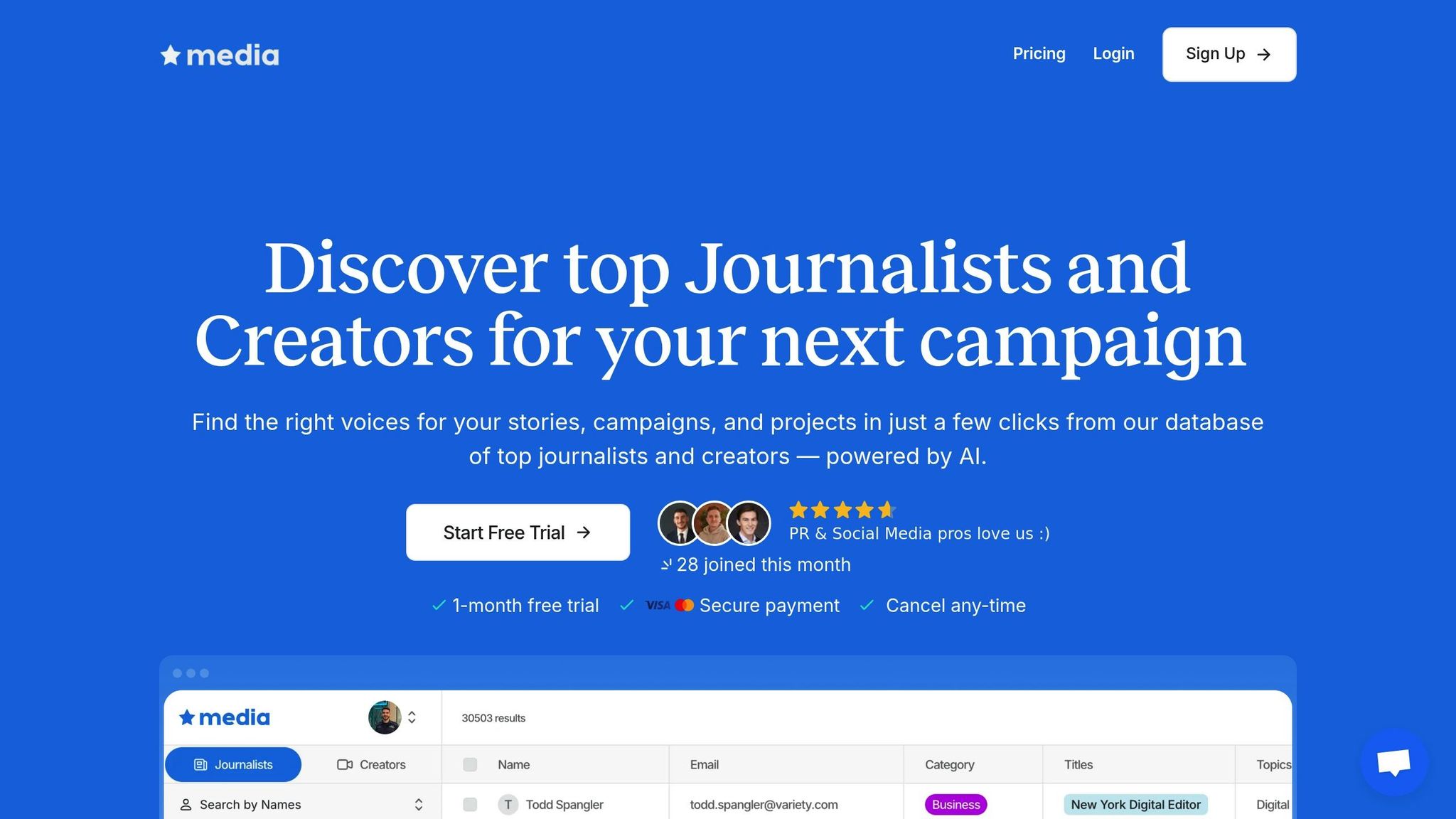
Media AI provides a streamlined solution to tackle the challenges of content licensing in co-creation projects. With access to a vast network of over 30,000 journalists and creators, its AI-powered database simplifies the licensing process for PR professionals and content creators alike.
Finding the Right Collaborators
The foundation of effective licensing lies in selecting the right partners for your project. Media AI's advanced matching and filtering tools help you identify collaborators whose expertise and content history align with your specific needs. By leveraging up-to-date data, the platform ensures you’re connecting with the most suitable creators.
Beyond just contact details, Media AI offers robust search capabilities that allow you to review content types and past collaboration records. This lets you approach potential partners with tailored proposals that align with their interests and expertise, increasing the chances of a successful partnership.
Simplifying Licensing Negotiations
Once you’ve identified potential collaborators, Media AI’s export and personalization tools make it easy to organize contacts and craft targeted outreach. By referencing a creator’s previous work, you can demonstrate a clear understanding of their approach, improving response rates and setting a professional tone for negotiations.
For projects involving multiple contributors, the platform helps identify individuals with a proven track record of working in team settings. This insight is invaluable for establishing fair and effective licensing terms for multi-party collaborations. With these tools, you can manage licensing agreements that are both flexible and compliant.
Maintaining Compliance and Efficiency
As projects evolve, maintaining compliance becomes essential. Media AI addresses this with its constantly updated database, ensuring you have access to accurate contact information and collaboration histories. This is particularly useful for adjusting licensing terms as project scopes change.
The platform’s no-contract approach offers flexibility, allowing you to adapt your licensing efforts without being tied to rigid agreements. Whether you need access to individual journalist contacts for $99/month or full database access for $149/month, Media AI’s pricing structure supports projects of all sizes, helping you scale without overextending resources.
Additionally, the platform’s user-friendly interface simplifies the management of multiple licensing relationships. You can track communication history, monitor collaboration results, and maintain detailed records, ensuring transparency and compliance. This reduces administrative hassles while keeping all aspects of content licensing organized and efficient, making it easier to manage complex collaborations.
Conclusion
Managing content licensing in co-creation projects requires careful planning, clear agreements, and the right tools. As content marketing continues to grow, ensuring proper licensing practices becomes increasingly important.
Licensing agreements help establish a solid foundation by clarifying ownership percentages, defining contributions, and outlining rights for all parties involved. Unlike full ownership transfers through assignments, licensing allows contributors to retain ownership while granting specific usage rights. This approach not only protects intellectual property but also ensures flexibility for all collaborators. Thanks to advancements in modern technology, implementing these agreements has become much simpler.
To tackle these challenges, tools powered by AI are proving to be game-changers. For instance, Media AI offers a streamlined solution for content licensing. With a network of over 30,000 journalists and creators, Media AI simplifies every step - from finding the right collaborators to ensuring compliance throughout the project. Its flexible pricing (starting at $99 per month for individual databases and $149 per month for full access) and no-contract model make it a practical choice for projects of any scale.
As co-creation efforts grow in complexity, managing intellectual property effectively is key to maintaining strong professional relationships and delivering high-quality content. Clear and enforceable agreements ensure that all contributors can collaborate with confidence while staying compliant.
FAQs
How can I make sure AI-generated content qualifies for copyright protection in a co-creation project?
To ensure AI-generated content qualifies for copyright protection in a co-creation project, there needs to be meaningful human involvement. This could involve steering the AI's output, making key creative choices, or refining the final product. Content produced solely by AI, without any human contribution, generally doesn't meet the criteria for copyright eligibility.
When working together on such projects, it's essential to clearly outline each participant's roles and contributions to stay within copyright regulations. Setting up a licensing agreement early in the process can clarify ownership and usage rights, helping to avoid potential disputes down the line.
What should I consider when choosing a licensing framework for a collaborative project?
When choosing a licensing framework for a collaborative project, it's important to address a few critical areas to ensure everything runs smoothly:
- Align goals and expectations: Make sure everyone involved is on the same page about the project's purpose and what you aim to achieve together.
- Define roles and responsibilities: Clearly spell out who owns what and who is in charge of specific tasks to avoid confusion later.
- Set clear licensing terms: Lay out the details, such as usage rights, revenue sharing, and the scope of the collaboration, so there’s no room for misinterpretation.
- Verify legal compliance: Double-check that all licensing agreements align with the relevant laws and regulations.
By focusing on these aspects, you’ll create a framework that promotes transparency and minimizes the risk of disagreements.
How can Media AI simplify content licensing for co-creation projects?
Media AI simplifies content licensing in co-creation projects by giving you access to an extensive database of more than 30,000 journalists and creators. Its advanced tools allow you to quickly search, filter, and connect with the ideal collaborators, making it easier to negotiate licensing terms.
By speeding up the process of identifying and reaching out to potential partners, Media AI helps make collaborations more seamless, saving time and energy for PR professionals, social media agencies, and freelancers alike.


